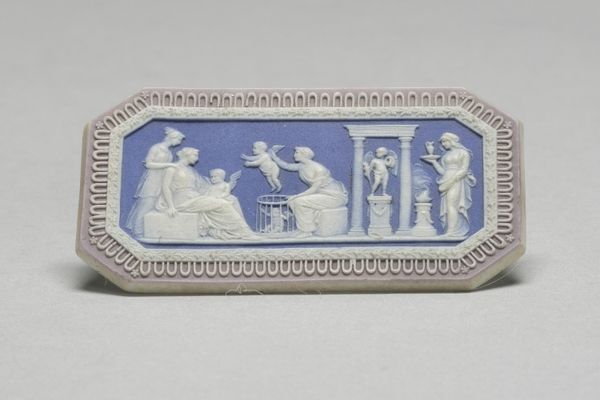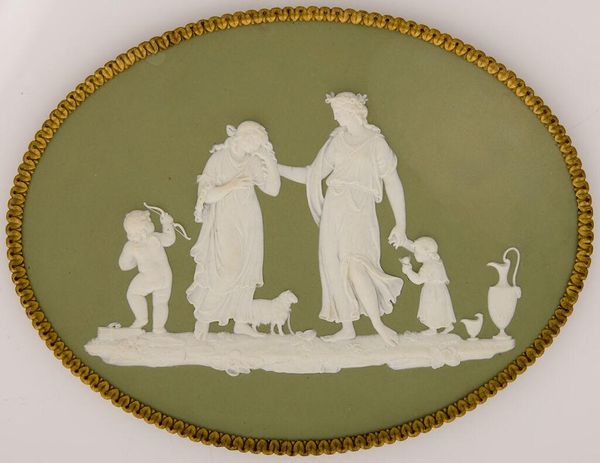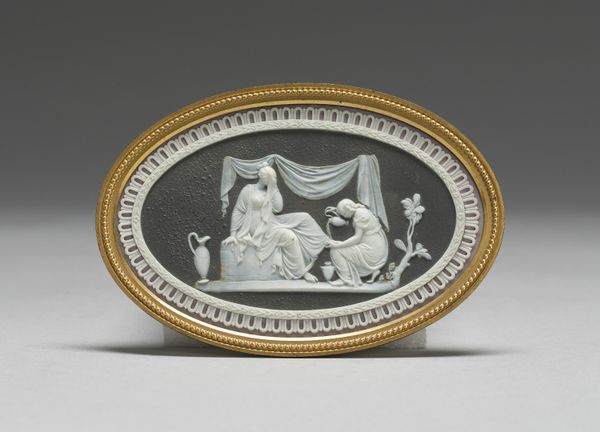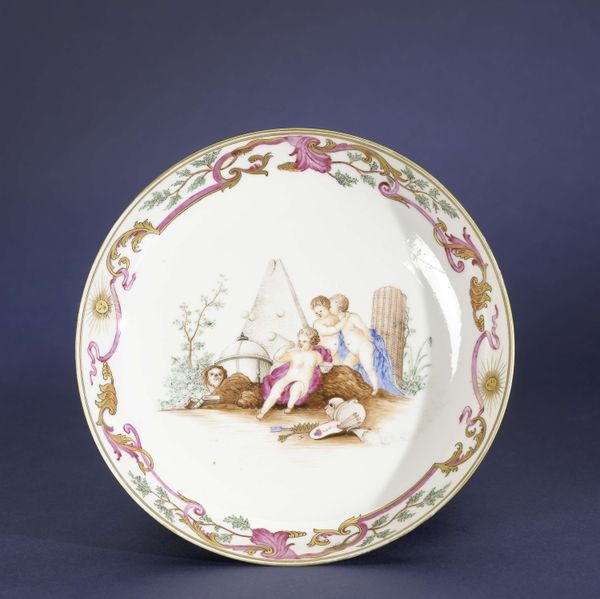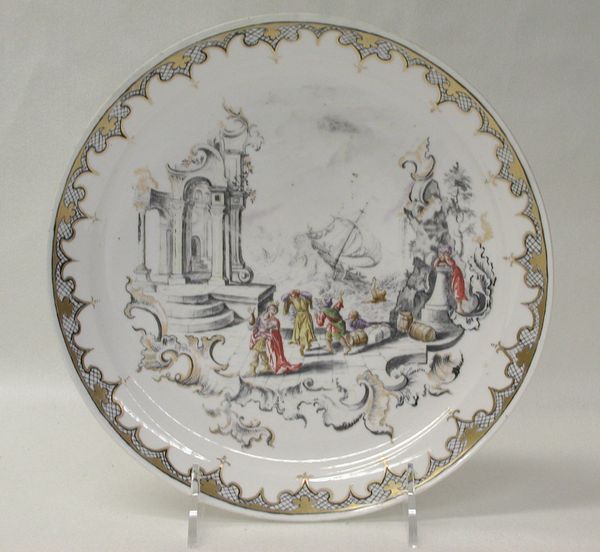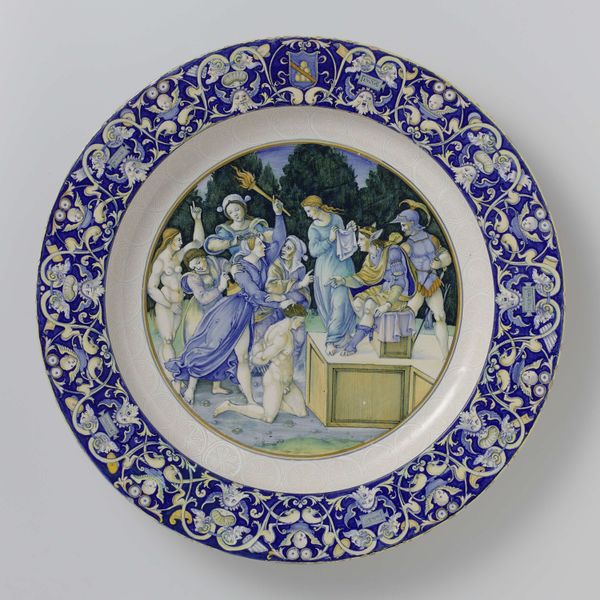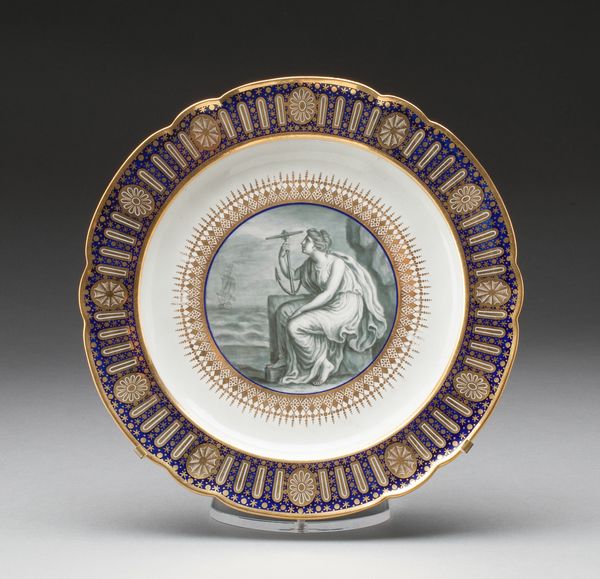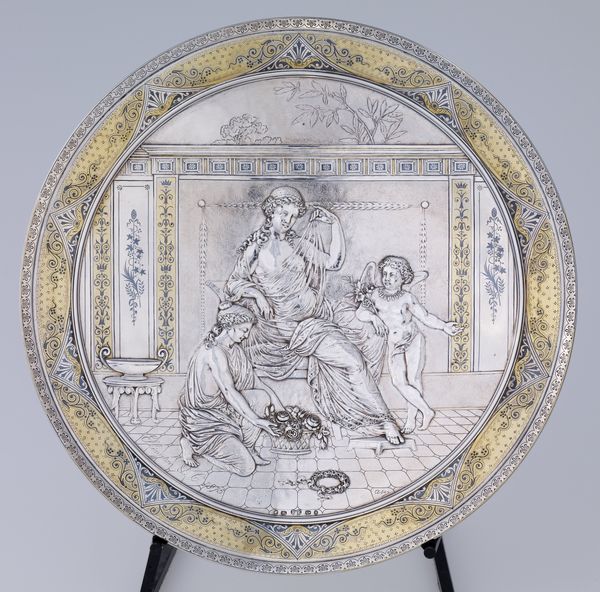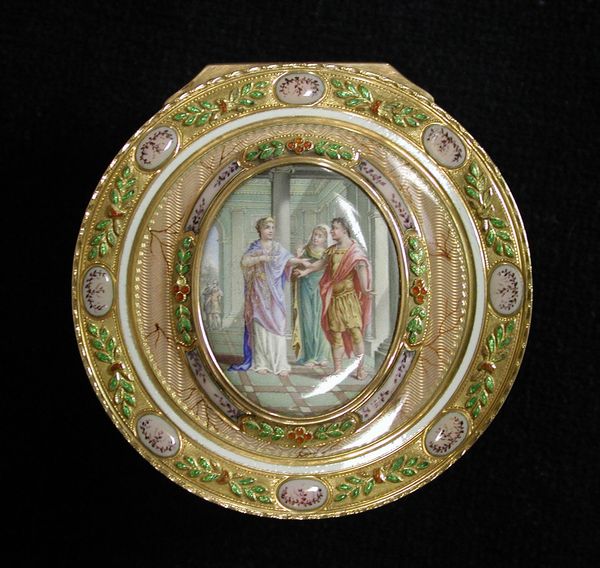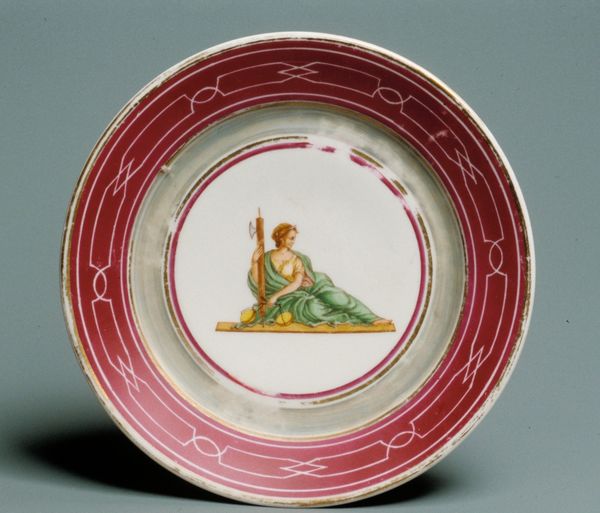
alabaster, relief, ceramic, sculpture
#
neoclacissism
#
decorative element
#
alabaster
#
relief
#
ceramic
#
classical-realism
#
figuration
#
sculpture
#
ceramic
#
decorative-art
Dimensions: 3 × 4 1/2 in. (7.6 × 11.4 cm)
Copyright: Public Domain
This plaque was made by Josiah Wedgwood, probably in the late 18th century, from Jasperware. This is a type of stoneware famous for its matte, unglazed finish and its capacity to be stained different colors. Here, we see a pale green ground, with lilac and white details. The figures are made in white and applied onto the surface as sprigs, a technique that gives the composition a bas-relief effect. Wedgwood perfected this method, adapting it from earlier ceramics. His factory also pioneered division of labor, breaking down the manufacturing process into specialized tasks. The scene is a classical one, rendered with neoclassical refinement. But it's the industrial means of production that allowed Wedgwood to bring this aesthetic to a mass market. He successfully straddled the line between art and industry, forever changing how we think about value and taste. So next time you see a Wedgwood object, remember that it embodies both artistic skill, and early capitalism.
Comments
No comments
Be the first to comment and join the conversation on the ultimate creative platform.



